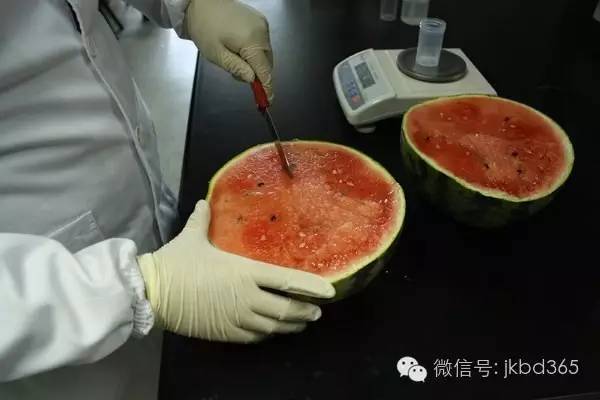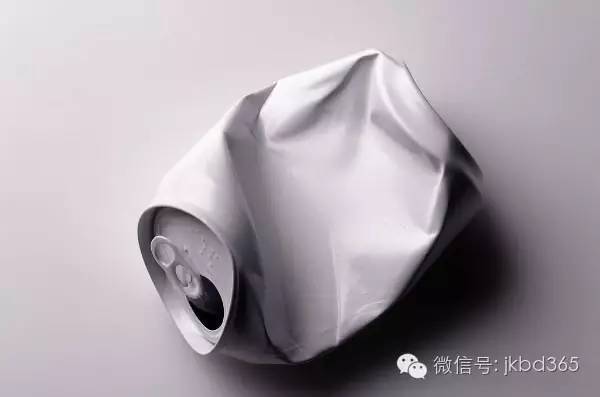孕期须知
化学品已经渗透到我们的食物链,家庭和环境中; 从中逃脱几乎是不可能的。而且,大家都知道,怀孕时避免毒素是绝对必要的,因为发育中的胎儿很容易受到普通化学品的影响。即使是日常的低频率的毒素接触也可导致婴儿发育异常或先天缺陷。
「五种化学品」一定避免
1、邻苯二甲酸盐

邻苯二甲酸酯是一类用于增加可塑性,耐久性,透明性,长寿建筑用品,个人护理产品,医疗设备,洗涤剂和表面活性剂,食品包装,儿童玩具,药品,油漆,油墨,化妆品的物质。
有了这样的广泛使用,这也难怪为什么那么多的人拥有毒素方面的健康问题。
邻苯二甲酸盐的最大问题是,它们干扰内分泌,尤其对孕妇造成不良影响的风险较高。[1] [2]研究表示邻苯二甲酸酯可能是乳腺癌的潜在原因。[3]
对于胎儿而言,邻苯二甲酸盐可能缩短肛门和生殖器之间的距离,这一问题有时导致不育。[4]此外, 准妈妈的流产也与邻苯二甲酸酯高频率接触有关。[5]
存储在含邻苯二甲酸酯的塑料会污染食物或饮料。水瓶是这一化学品的常见物品。邻苯二甲酸盐也可以在汽车和家庭中,通过呼吸呼入这些化学物质是它们进入体内的另一种方式。
避免塑料容器,易拉罐,以及合成香料可以帮助减少接触这种常见的化学品。此外,选择不含邻苯二甲酸酯的婴儿玩具,奶瓶,奶嘴等产品,让您的孩子远离邻苯二甲酸酯。
2、农药

现代农业去除土壤的营养物,引入转基因的生物体到环境中,并使用有毒的杀虫剂。抗杀虫剂的昆虫和抗草甘膦杂草成为常态,由于农药的过度使用……而唯一的解决办法就是实用更多的农药。
今天,我们生活在这样一个充满农药毒物的世界。事实上,The fact that their purpose is to kill should clarify their danger. [6] 研究表明,有些农药引起儿童和出生缺陷的神经系统损害。[7] 这种有毒垃圾是如此普遍和难以逃避的 – 农药已在母亲的血液,脐带血和母乳中发现。[8]
农药已与以下症状有关:
•婴幼儿行为异常
•新生儿反射异常
•发育迟缓
•更低的记忆里和智商
孕妇避免农药的最好办法就是只吃有机食品。现在还有其他来源(空气,水…),但有机至少会保护你的饮食。选择有机的个人护理产品,洗发水或肥皂,都可以减少接触毒素。
3、三氯生

可以说是最隐蔽化学品之一,三氯生通过抗菌肥皂接触身体。[9]尽管它有杀菌能力,事实是,三氯生是人类已知的最危险的化学品之一。它已经证实与男女不孕不育有关。
母体暴露于三氯生也被证明损害婴儿的甲状腺功能开发。[10] [11] 准妈妈应该更加重视这个简单的事实,因为甲状腺可调节身体的每一个细胞的能源生产。
与三氯生相关的负面健康影响随着Minnesota洲的禁用在最近这几年被人熟知。 [12]不过,对于其他国家的居民,三氯生可能是难以避免的。因为三氯生的主要用途是作为消毒剂,避免它最简单和最好的方法就是使用抗菌手凝胶,皂,以及类似的产品。[13]
4、双酚A

通常所说的BPA(Bisphenol A,双酚A缩写),双酚A用于塑料生产,是雌激素干扰物,被作为锡罐衬里,提供了光滑的手感和外观。
在准妈妈的血液中BPA已被证明与婴儿的体重低有关。[14]双酚A也已显示导致婴儿的存活率降低。即使是低剂量已与大脑功能缺陷有关。[15]
双酚A与邻苯二甲酸酯一同使用;因此,为了避免双酚A,最好的办法是遵循同样的建议。总之,应避免塑料和只能选择不含BPA的食品包装。
5、铝

铝的使用比大多数人所知的更为广泛。无论是食品包装,个人护理用品,或炊具,很多人每天都暴露于铝。[16]该金属已被链接到大鼠的行为变化有关,可能翻译成行为人类的行为障碍。[17]
独立研究显示,铝可具使神经变性的特性,可能影响个人认知障碍的发展,包括阿尔茨海默氏病的风险。[18]
疫苗是婴儿接触到这种金属的途径。孕妇注射含铝疫苗也会使自己腹中的宝宝暴露于铝。婴儿和发育中的胎儿,因为他们体重小,有更大的摄取某些化合物的能力。
避免传统的止汗剂可能是孕妇的一个以减少她们婴儿风险的办法。大多数除臭剂的活性成分,除非标记,是铝。
小苏打也许是最便宜的切最有效的 – 自然,无铝除臭剂。应该避免大多数含有铝的加工食物,这包括有机加工食品。

「底线」
影响健康的化学毒性是不断发展的,曾经被认为与成人相关疾病转向孩子。糖尿病,哮喘,过敏和神经方面的问题,影响了越来越多的孩子。
参 考 文 献 References:
1. Weinberger B, Vetrano AM, Archer FE, Marcella SW, Buckley B, Wartenberg D, Robson MG, Klim J, Azhar S, Cavin S, Wang L, Rich DQ. Effects of maternal exposure to phthalates and bisphenol A during pregnancy on gestational age. Journal of Maternal-Fetal and Neonatal Medicine. 2013 Jul 18. PMID: 23795657.
2. Téllez-Rojo MM, Cantoral A, Cantonwine DE, Schnaas L, Peterson K, Hu H, Meeker JD. Prenatal urinary phthalate metabolites levels and neurodevelopment in children at two and three years of age. The Science of the Total Environment. 2013 Jun 4;461-462C:386-390. doi: 10.1016/j.scitotenv.2013.05.021.
3. Lopez-Carrillo L, Hernandez-Ramirez RU, Calafat AM, Torres-Sanchez L, Galvan-Portillo M, Needham LL, Ruiz-Ramos R, Cebrian ME. Exposure to phthalates and breast cancer risk in northern Mexico. Environ Health Perspect. 2010 Apri;118(4):539-44. doi: 10.1289/ehp.0901091.
4. Zehr, JL, Gans SE, McClintock, MK. Variation in reproductive traits is associated with short anogenital distance in female rats. Developmental Psychobiology. 2001 May;38(4):229-38. PMID: 11319729.
5. News Medical. Exposure to phthalates during pregnancy may increase risk of developmental problems in children. September 6, 2011.
6. LM Pastore, I Hertz-Picciotto, JJ Beaumont. Risk of stillbirth from occupational and residential exposures. Occupational and Environmental Medicine. 1997;54:511-518 doi:10.1136/oem.54.7.511.
7. Carol J. Burns, Laura J. McIntosh, Pamela J. Mink, Anne M. Jurek, & Abby A. Li.Pesticide Exposure and Neurodevelopmental Outcomes: Review of the Epidemiologic and Animal Studies. Journal of Toxicology and Environmental Health. June 18, 2013. DOI: 10.1080/10937404.2013.783383.
8. Kongtip P, Nankongnab N, Woskie S, Phamonphon A, Tharnpoophasiam P, Wilaiwan K, Srasom P. Organophosphate Urinary Metabolite Levels during Pregnancy, Delivery, and Postpartum in Women Living in Agricultural Areas in Thailand. Journal of Occupational Health. 2013 Jul 26 PMID: 23892639.
9. Crawford BR, Decatanzaro D. Disruption of blastocyst implantation by triclosan in mice: impact of repeated and acute doses in combination with bisphenol-A. Reproductive Toxicology. 2012 Dec;34(4):607-13. doi: 10.1016/j.reprotox.2012.09.008.
10. Rodriguez PE, Sanchez MS. Maternal exposure to triclosan impair thyroid homeostasis and female pubertal development in Wistar rat offspring. Journal of Toxicology and Environmental Health. 2010;73(24):1678-88. doi: 10.1080/15287394.2010.516241.
11. Paul KB, Hedge JM, Devito MJ, Crofton KM. Developmental triclosan exposure decreases maternal and neonatal thyroxine in rats. Environmental Toxicology and Chemistry. 2010 Dec;29(12):2840-4. doi: 10.1002/etc.339.
12. Elizabeth Landau and Saundra Young. Minnesota issues ban on antibacterial ingredient. CNN Health. Wed May 21, 2014.
13. EWG’s Skin Deep. Skin Care. EWG’s Skin Deep Cosmetics Database.
14. Harley KG, Gunier RB, Kogut K, Johnson C, Bradman A, Calafat AM, Eskenazi B.Prenatal and early childhood bisphenol A concentrations and behavior in school-aged children. Environmental Research. 2013 Jul 16. pii: S0013-9351(13)00112-6. doi: 10.1016/j.envres.2013.06.004.
15. Kundakovic M, Gudsnuk K, Franks B, Madrid J, Miller RL, Perera FP, Champagne FA.Sex-specific epigenetic disruption and behavioral changes following low-dose in utero bisphenol-A exposure. Proceedings of the National Academy of Science. 2013 Jun 11;110(24):9956-61. doi: 10.1073/pnas.1214056110.
16. Zhang Q, Xu L, Sabbioni E, Piao L, Di Gioacchino M, Niu Q. Lysosomes involved in the cellular toxicity of nano-alumina: combined effects of particle size and chemical composition. Journal of Biological Regulators and Homeostatic Agents. 2013 Apr-Jun;27(2):365-75. PMID: 23830387.
17. Abdel-Aal RA, Assi AA, Kistandy BB. Rivastigmine reverses aluminum-induced behavioral changes in rats. Eur J Pharmacol. 2011 Jun 1;659(2-3):169-76. doi: 10.1016/j.ejphar.2011.03.011.
18. Grassie C, Braithwaite VA, Nilsson J, Nilsen TO, Teien HC, Handeland SO, Stefansson SO, Tronci V, Gorissen M, Flik G, Ebbesson LO. Aluminum exposure impacts brain placticity and behavior in Atlantic salmon (Salmo salar). Journal of Experimental Biology. 2013 Aug 15;216(Pt 16):3148-55. doi: 10.1242/jeb.083550.
